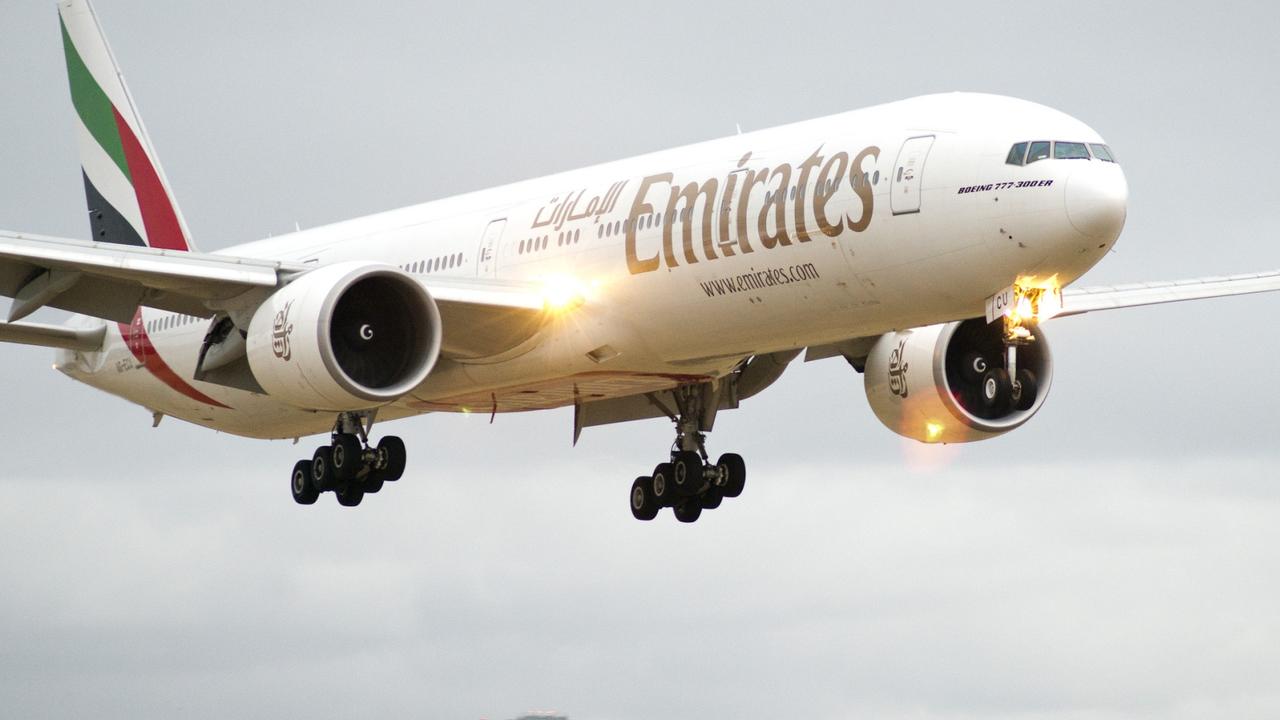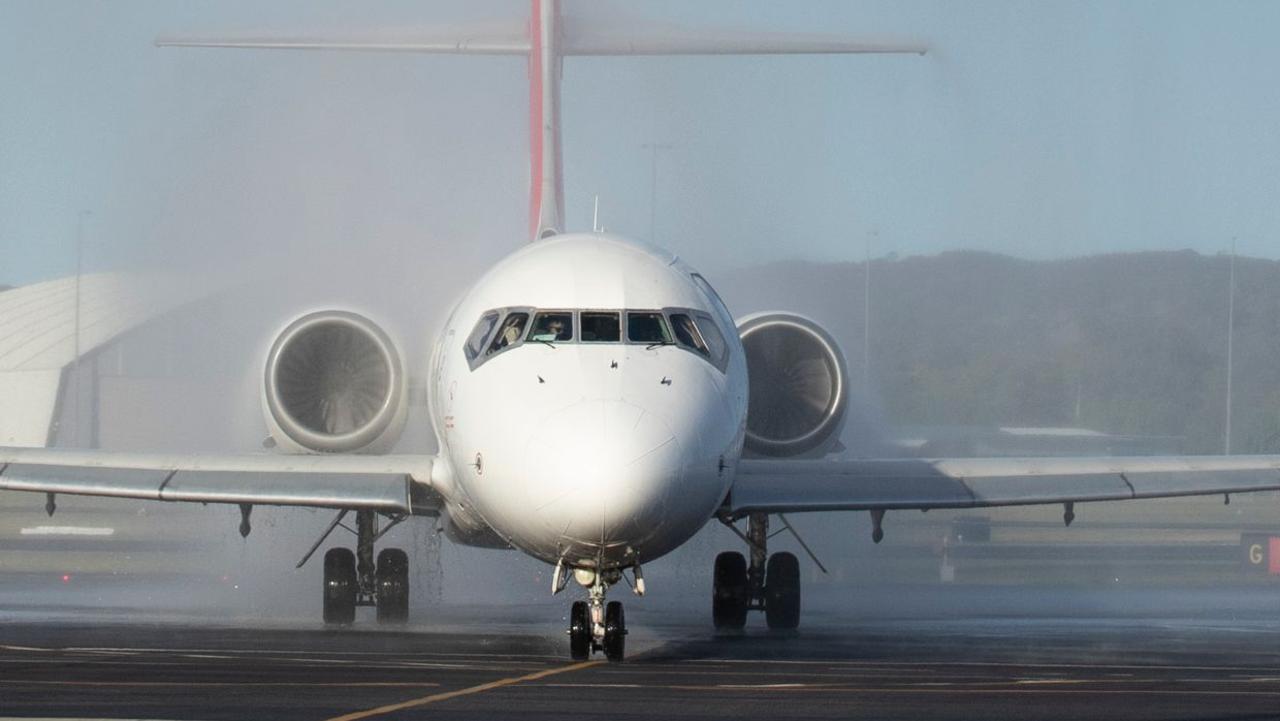How coronavirus could change design of economy class seats on planes
Surrounded by a transparent shield and the middle seat facing backwards, there’s a new design that could pave the way for economy cabins around the world.

Forget flying in economy as you once knew it.
Because post-pandemic, your seat could look a little different as airlines find ways to keep passengers safer and virus-free.
A new plane seat design, created by Aviointeriors, suggests we could be flying backwards (if you’re stuck in the middle) and each seat would be fitted with a hygiene screen.
The revolutionary sitting arrangement in economy class features a plastic screen around the head and side, preventing contact with the passenger seated next to you.
RELATED: Moment it all went wrong for Virgin Australia
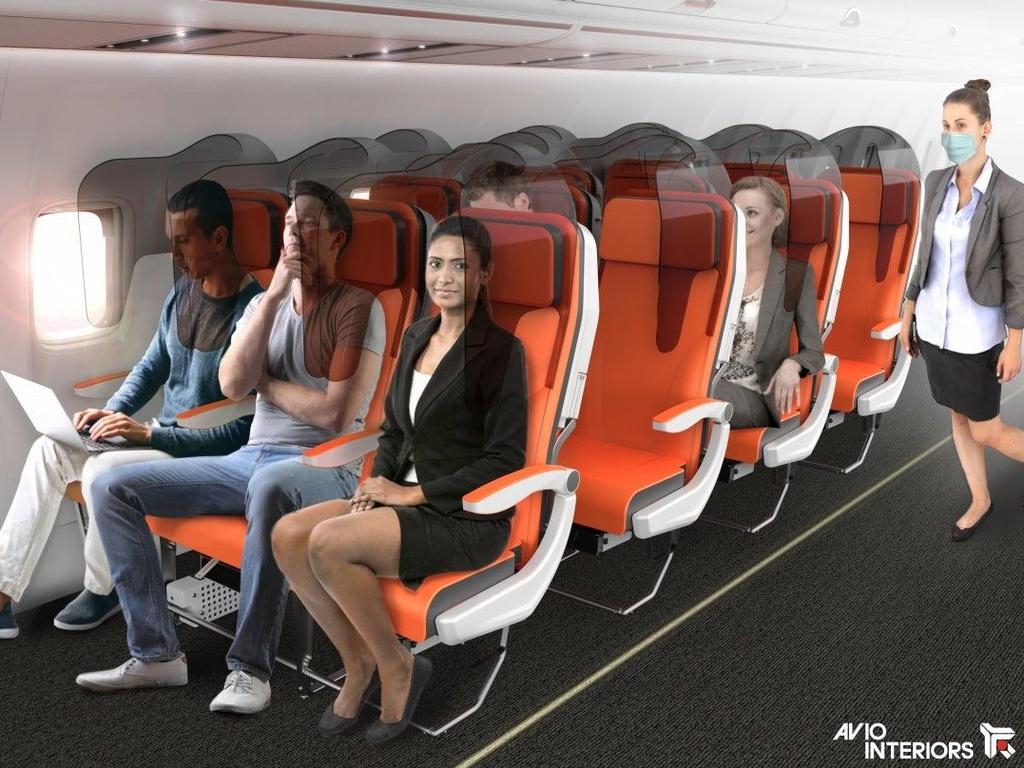
The designers at Aviointeriors said the shield is called ‘Glassafe’ and is transparent to allow communication between passengers but eliminate the chance of spreading any viruses between travellers.
The best part is that each plane doesn’t need to reinstall seats into their cabins, with the shield simply fitted onto existing economy seats. The design allows the lower part of the seat free for passengers to continue using the in-flight entertainment or to eat their meals.
RELATED: Packed Qantas flight sparks outrage over social distancing
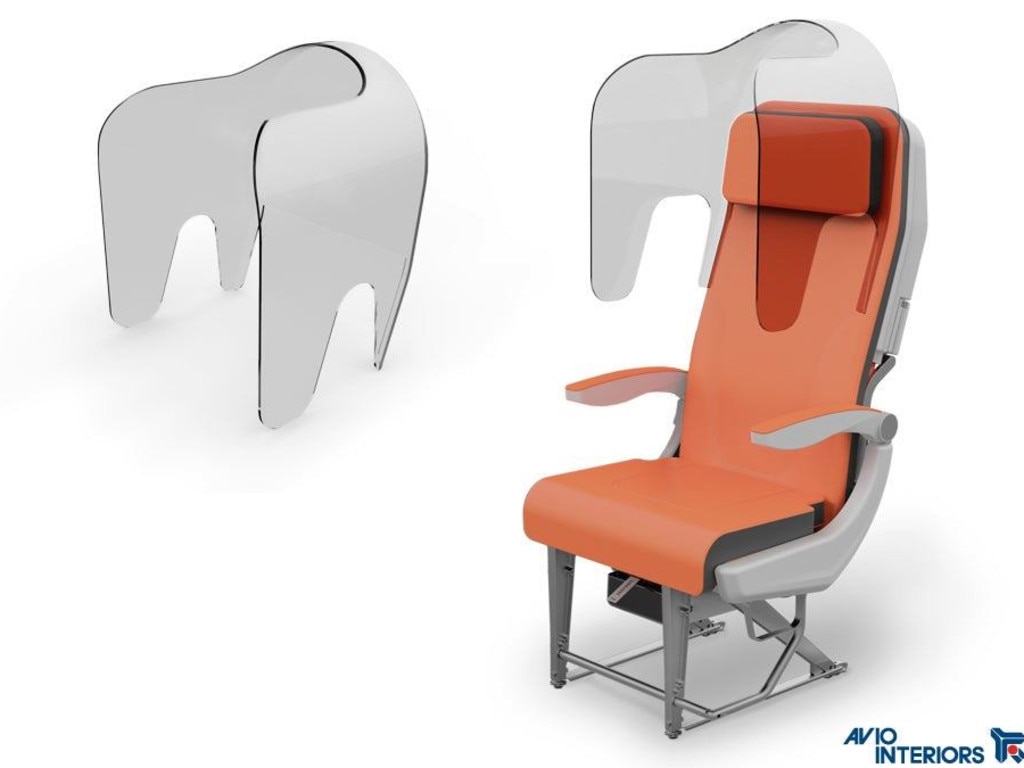
“Glassafe (creates) an isolated volume around the passenger in order to avoid or minimise contacts and interactions via air between passenger and passenger, so as to reduce the probability of contamination by viruses or other,” Aviointeriors said in a statement.
“Each passenger has their own space isolated from others, even from people who walk through the aisle.
“Each Janus seat is surrounded on three sides by a high shield that prevents the breath propagation to occupants of adjacent seats.
“It is made of easy cleaning and safe hygienic materials. The option is available with the shield in opaque material or with different degrees of transparency.”
Along with the installation of the shield, Aviointeriors has also designed a seating plan dubbed the Janus seat, which has been inspired by the two-faced Roman God.
The S-shape design means that the middle passenger would face the back of the plane, with the window and aisle passengers still facing forwards.
RELATED: How to stay safe on a plane amid the global coronavirus outbreak
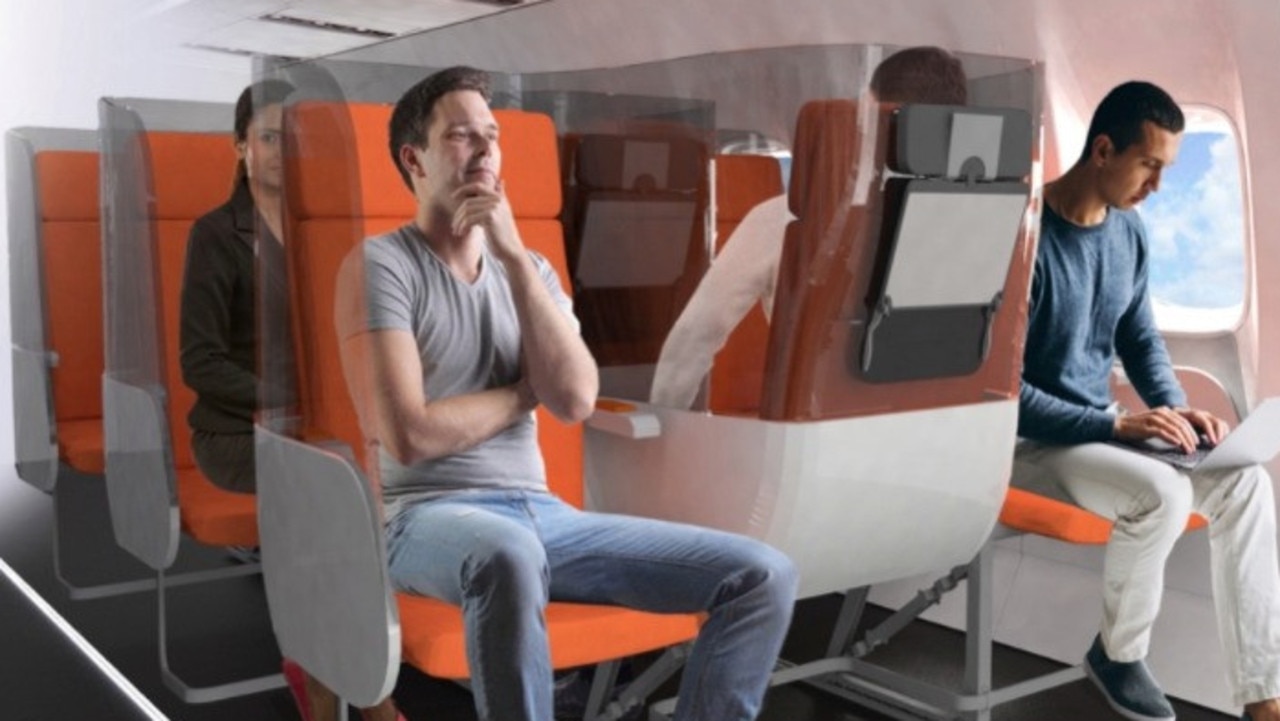
The biggest problem with the staggered seating arrangement is that the middle seat passenger would still face two passengers, meaning contamination would still be on the cards.
A spokesperson for Aviointeriors told the Daily Mail that while the designs are ready, both shield and S-design seating need to go through certain safety tests to be approved for air travel.
“All national authorities worldwide are trying to block this pandemic through a series of actions and recommendations and we want to contribute with our ideas and proposals in the interests of the whole community,” the spokesperson said.
“With this objective in mind, we have studied new solutions that take into account social distancing among passengers sitting in economy class, where there is a condition of higher density, but with characteristics that remain applicable even in the lower density classes such as premium economy or business class.
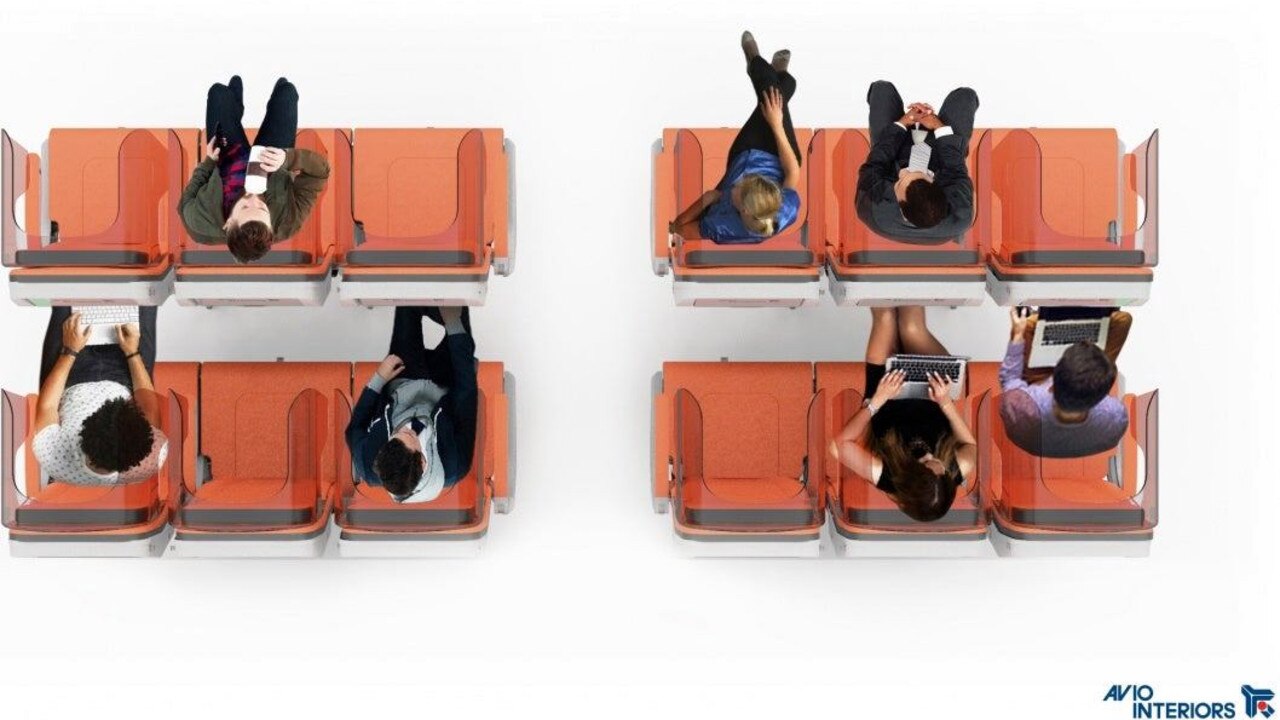
“We have worked and we will continue to develop products specifically designed to make the travels of the near-future post-virus ever safer and in accordance with the new requirements for passengers who will have to share the spaces available for the duration of the transport.”
Some have questioned whether the screens would actually work, given the suggestion that the coronavirus can live on plastic for up to three days.
As an immediate measure to limit the spread of the virus on board planes, Qantas, Delta, Alaska and several other airlines have banned the booking of the middle seat to ensure social distancing.
According to The Sun, some other designs previously suggested to make plane travel easier include “privacy panels” which can be folded out of the side of the seat.
The design, called Interspace Comfort System, looks like your regular plane seat but if you lift up the seat back, you’ll find two hidden panels behind it that fold out, effectively creating a privacy divider on either side of you.
The ease of access means that passengers can get in and out of their seats easily, and create private spaces for families and friends who are sitting together.


